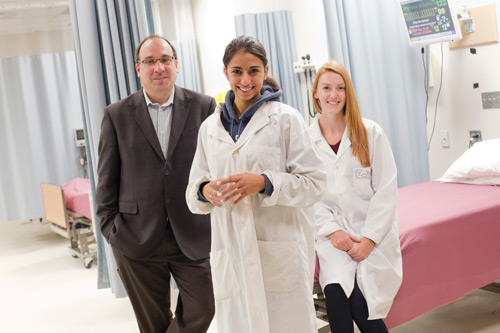
 |
 Trent Professor and Students Discover Genetic Secrets of Neurodegenerative Disease
Unlocking the genetic code behind one of the most common neurodegenerative diseases known to humans was no cake walk, but with the guidance of her professor, Ph.D. student Andressa Lacerda has made a key contribution to future medical research. Along with Biology professor Dr. Craig Brunetti and undergraduate Biochemistry student Emily Hartjes, Ms. Lacerda discovered the genetic factors that result in Charcot Marie Tooth (CMT) disease. Published in scientific journal PLoS ONE, Ms. Lacerda’s research will lead to a better understanding of the disease, and provide clues for developing better diagnoses and treatments of CMT. The disease causes damage to the peripheral nerves of the arms and legs and eventually leads to muscle weakness and reduced mobility. The research, undertaken by Ms. Lacerda with support from Dr. Brunetti and Ms. Hartjes, focuses on LITAF, a cellular gene that is used by the body to degrade and dispose of proteins. If proteins in the body aren’t properly broken down, old protein fragments can accumulate and damage cells. The inability to break down proteins has been linked to a number of neurological disorders. Until now, little in-depth research had been done on the LITAF gene. These new findings could have far-reaching effects on the diagnosis and treatment of Charcot Marie Tooth Disease, which affects one out of every 2,500 people. For example, Ms. Lacerda’s work demonstrated that while some mutations in LITAF completely change the location of LITAF in the cell, other mutations result in only a partial change of LITAF. This may lead to different clinical outcomes for patients depending on the type of LITAF mutation that they carry. Future research could link different mutations in the LITAF gene with different types of CMT, and therefore, to develop new forms of therapy targeted to each type of mutation. Undertaking graduate-level research with real and groundbreaking implications for medical treatments was a wonderful opportunity for Ms. Lacerda, who began her research on the LITAF gene in 2011. “Trent is known for having an amazing Environmental and Life Sciences program, but people don’t always realize that the University also has the capacity for this type of research. Being part of that and having my research showing that is amazing.” |

































